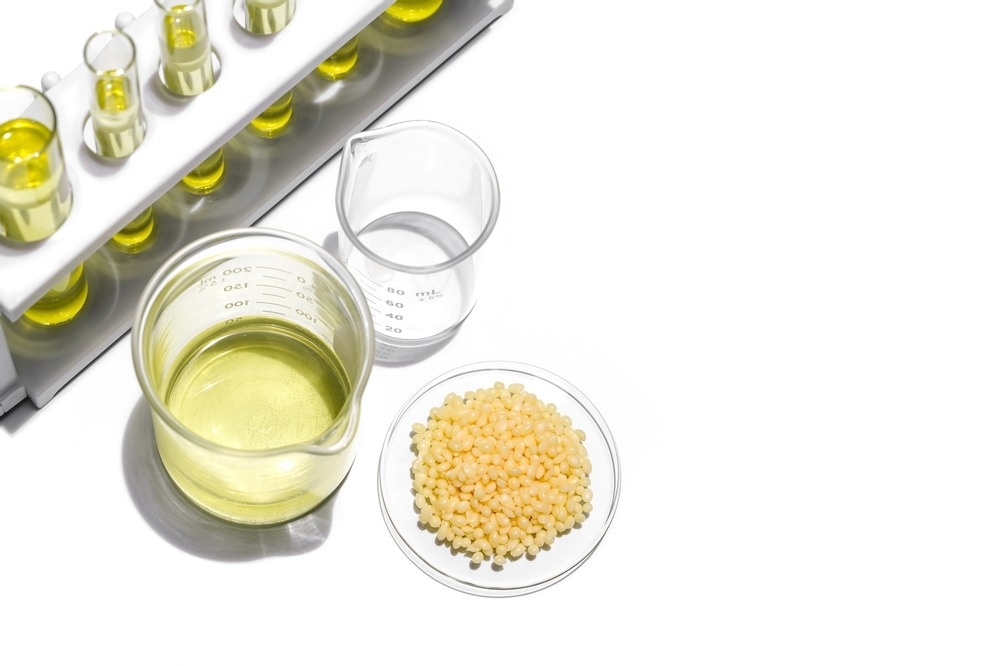In a paper recently published in the journal Bioresource Technology, researchers reviewed the integration of the concepts of green economics with the beneficial production of biosurfactants and their related applications. The advancements in their characterization, manufacture, as well as classification, were also explored.

Study: Integration of Green Economy Concepts for Sustainable Biosurfactant Production – A Review. Image Credit: Chadchai Krisadapong/Shutterstock.com
Background
Due to the expansion of arable land, adoption of green technologies, and population growth, agricultural productivity has tripled over the past 50 years. Agriculture is responsible for 24% of anthropogenic global greenhouse gas (GHG) emissions and 70% of worldwide water consumption. Although global warming and climate change are threats brought on by GHG emissions, there appears to be a substantial correlation between a country's degree of development, population size, and agro-food waste amounts.
A bio-based circular economy to produce biosurfactants would emerge from the ability to integrate agro-industrial ecosystems and use green technologies. Notably, the development of biosurfactants can support biomass value addition and environmentally friendly manufacturing. Moreover, attempts to enhance biosurfactant yields have altered bioprocesses and utilized food waste as a low-cost feedstock to produce biosurfactants. In this review, the team highlighted the characterization and advancements in the synthesis of food/health-grade biosurfactants employing agro-based wastes and capable microbes as feedstocks.
Integration with Green Economy
Surfactants are chemical compounds having diverse properties and functions, such as reduction of surface tension, emulsification, micelle production, and oil displacement. Biosurfactants are biodegradable, environmentally compatible, and non-toxic. An integrated approach would guarantee socioeconomic and product life cycle assessments as well as microbial optimization.
To manufacture toxin-free surfactants, current research has focused on using genetically modified or non-pathogenic bacteria. Reduced CO2 emissions are achieved by producing biosurfactants from waste feedstocks. Oil palm refinery and animal fat hydrolysate wastes are two examples of agro-wastes that make suitable feedstock for producing biosurfactants. Utilizing substrates derived from agro-food wastes not only facilitates environmental waste management but also decreases the cost of biosurfactant production.
Biosurfactant Production Strategies
Important production parameters include fermentation conditions, microbial types, bioprocesses, and growth substrates. Food and health-grade biosurfactants made from Saccharomyces cerevisiae and Lactobacillus strains are safe. As a result, it may be more cost-effective to substitute pentanol for organic solvents like chloroform, ethanol, or ethyl acetate in lab-scale downstream processes.
Metabolic engineering, a method that modifies the surfactant molecule structures, such as the sugar moiety, fatty acid tail, lactonization, and acetylation can be used for enhancing waste to biosurfactant synthesis. Optimum biosurfactant production can be achieved by genetic regulation and modification. This can involve strain optimization, which entails broadening the biosurfactant producer's substrate utilization range to enable successful strain growth on nutrient sources that it had previously been unable to assimilate. Moreover, the in-silico engineering process includes the introduction of key genes, coupled machine learning techniques with optimization, improved extraction, and multi-omic modeling.
The strategies for the characterization of potent biosurfactant synthesizers include the tensiometry method and the emulsification activity process. Sequence-based methods that are biologically advanced support the abundant synthesis of biosurfactants. Furthermore, improvements in next-generation sequencing technology and reducing study costs have progressed metagenomic analysis. Although the metagenomics approach is useful for identifying microbes, it is ineffective in identifying functional genes. Thus, integrating transcriptomics with metagenomics helps in understanding gene activities.
Classification and Applicability
Anti-biofilm, anti-inflammatory, anti-tumor, antioxidant, stabilizing, and emulsifying actions are present in health-grade biosurfactants. Due to their beneficial characteristics for human health and non-toxicity, biosurfactants have differing applications and consumption forms. Biosurfactants used in the health sector exhibit immunomodulatory, antibacterial, and anti-adhesive properties.
Additionally, to treat polluted soils, enhance seedling fertility, reduce plant diseases, and increase nutrient availability for both plants and microbes, biosurfactants synthesized from bio-based wastes have been utilized. To produce economically and commercially viable biosurfactants and reduce waste amounts, low-cost agro-waste feedstocks are essential. Thus, the application of biosurfactants in terrestrial environments can increase plant growth, phytohormone production, disease and pest resistance, and micronutrient uptake.
However, the high feedstocks and downstream process costs have resulted in limited production, despite rising demand for health-grade and eco-friendly biosurfactants. Some production components may be changed to reduce facility-dependent costs, particularly by replacing traditional substrates with agro-food wastes to change the economics of the bioprocess. Biosurfactant production may be further optimized by combining cutting-edge biotechnological methods, suitable feedstock, and capable microbes since biosurfactant volumes often rely on the type of substrate and bioprocess used.
Conclusions
Overall, enhancing the output volume of sustainable biosurfactants with food waste reduction, reuse, and recycling requires an integrated green economy bioprocess. The supply of safe and affordable biosurfactants can be enhanced due to the sustainability of feedstock derived from food or agro-waste, which benefits environmental management.
According to the authors, future research prospects in health-grade biosurfactants production should include efforts to increase resource efficiency, develop better management alternatives to protect and conserve renewable natural resources, adopt novel strategies to support sustainable and resilient agriculture, and ensure effective and responsible governance mechanisms.
Disclaimer: The views expressed here are those of the author expressed in their private capacity and do not necessarily represent the views of AZoM.com Limited T/A AZoNetwork the owner and operator of this website. This disclaimer forms part of the Terms and conditions of use of this website.
Source:
Linda Mgbechidinma, C., et al., Integration of Green Economy Concepts for Sustainable Biosurfactant Production – A Review, Bioresource Technology (2022), doi: https://doi.org/10.1016/j.biortech.2022.128021